Whether it’s a stool, a mirror or a space, Tadeas Podracky is always looking for ways to go against the traditional rules of “good” design. His works which look like enormous, prolific corals, question the boundaries of nature, the environment and the human body. The secret of the experimental designer lies first and foremost in his knowledge of materials—his experimental design work is characterised by a continuous exploration of how people communicate with materials and vice versa. Projecting sentimental, yet drastic feelings of the future while reminding us of ourselves, we introduce you to Tadeas Podracky whose self-expression is not limited by imagination.
This article originally appeared in issue no. 8 of the Hype&Hyper print magazine.


You call yourself an experimental designer and your subversive creations leave a lasting mark on their spectators at first glance. How did you find your voice?
I found my voice in the process of gradual learning and personal, emotional liberation. My studies at the Eindhoven Design Academy greatly contributed to this by challenging me and making it possible to take a stand and articulate my view of the world around us. Some personal challenges also motivated me to reach the conclusion that I don’t want to make compromises about my self-expression, I want to keep exploring and creating. Learning is usually a gradual process that I hope will never end.
Biomorph shapes and questioning traditional methods—in your works, you continuously question materials, in many cases, you don’t even specify the final form of the object, it rather takes shape step by step during the progressive phases of creation. What do you like better: the process of design or the first look at the final version of your creation?
The basis of my work is physicality. I love the process even though it’s quite often long and tiring. I’m consciously incorporating manual labour and the exploration of the relationship between my body and the object during the process. This connection is not only physical, I use manual labour as a medium of research that helps with the articulation of the subject based on my emotional state during work and as a reaction to my environment.
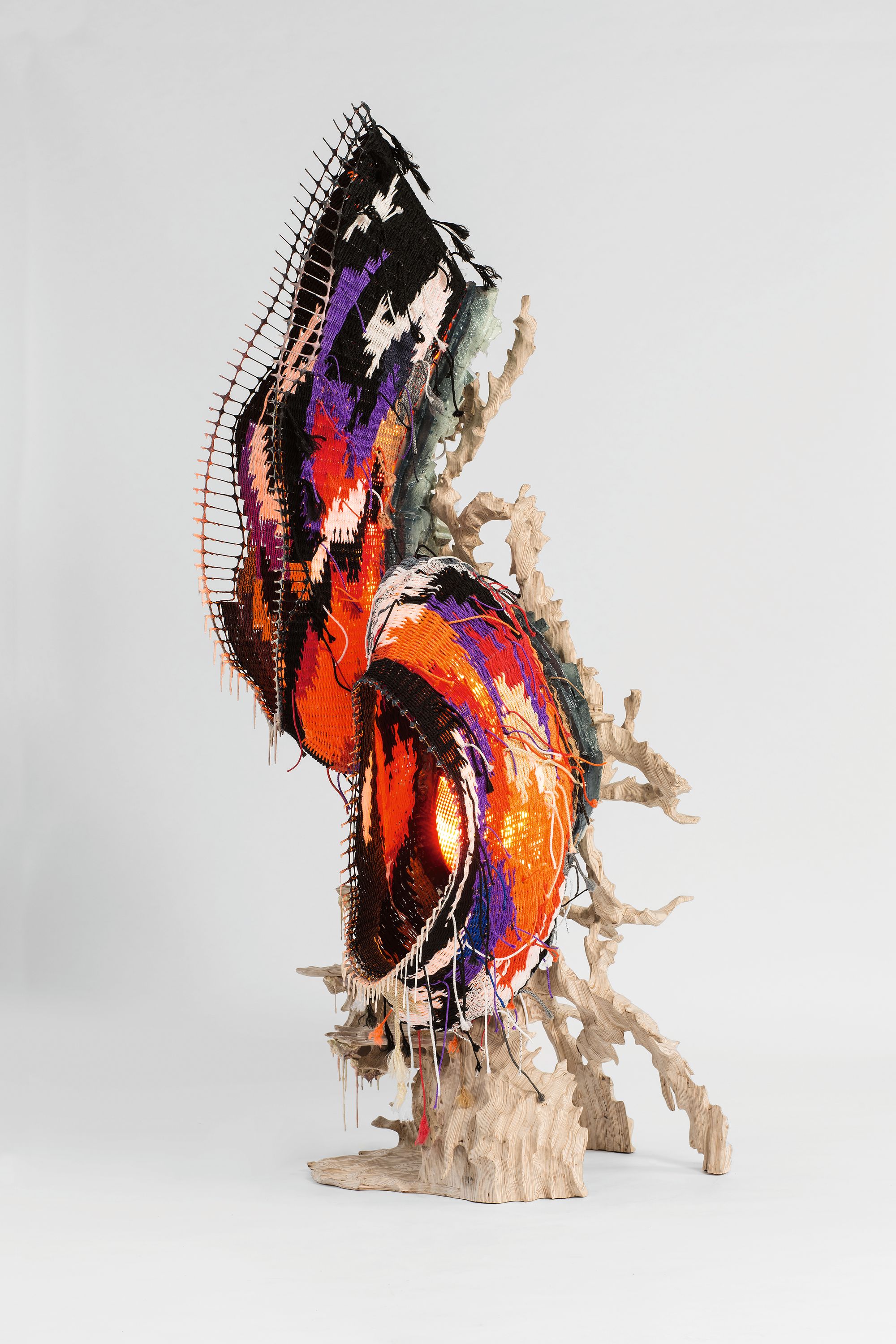
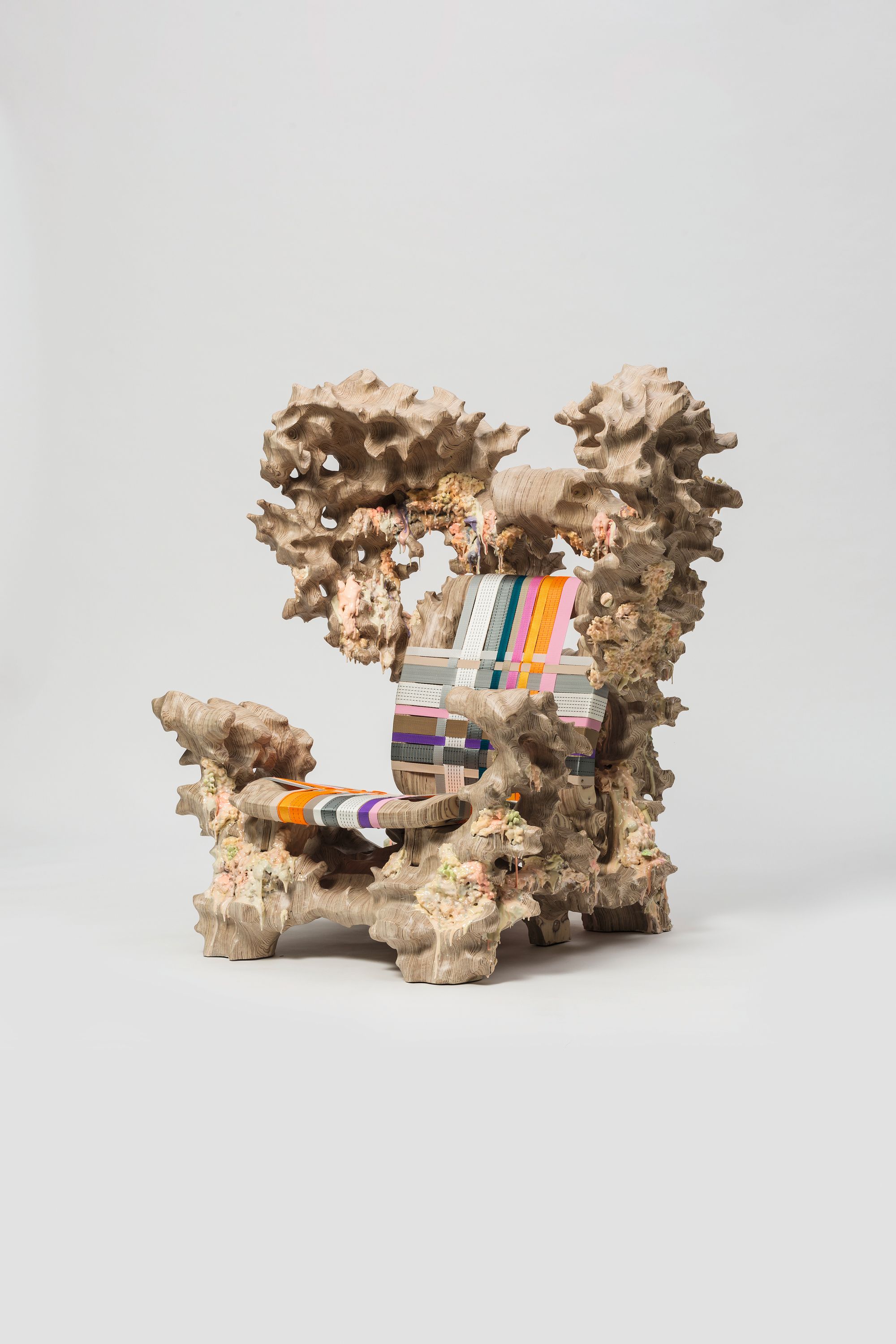
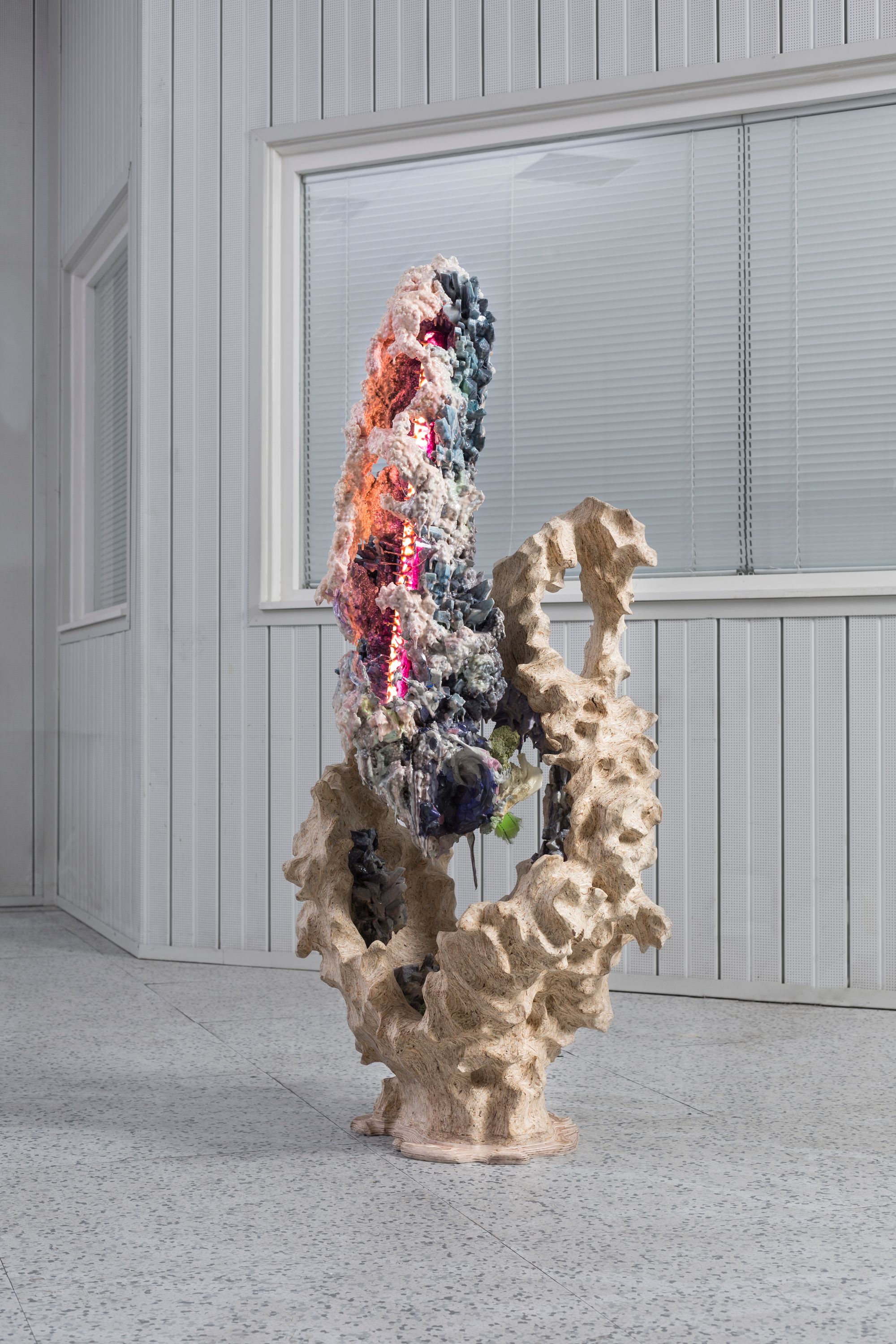
Your pieces are on the border between reality and imagination. How can you be an expressionist in design where artistic expression and function are equally important? How are you finding a balance between the two?
I’m not trying to find balance—this is something I can play with, but it’s not a priority. The most important is the expressive power of the creation and the critical potential it aims to achieve. The fact that I’m interested in everyday objects comes from my conviction that design is closest to people, this is why it has the greatest effect on us. That’s why, for me, this is the most natural medium.
This summer, you had the chance to show your pieces at the Side Gallery in Barcelona as part of the GLOBAL STOOL exhibition. The exhibition is a complete design journey around the world. Chairs, stools and other objects you can sit on are the most dynamically evolving pieces of the furniture world. Why do you think that is?
You can approach this question from different angles. I like stools because they are simple, elementary objects, used to support the human body since ancient times. The function comes from the needs of the body, while the shape, the material, the colour… basically everything else depends on the culture or the context where the chair is from. I’m interested in highly imaginative scenarios in which everything is interconnected and grows according to laws that are unknown to us. This approach might not reflect directly the current context of what’s been happening in society lately, however, yet it opens up opportunities that we are already exploring in the virtual realms, and that, in the near future, might need to be dealt with in our everyday lives as well.
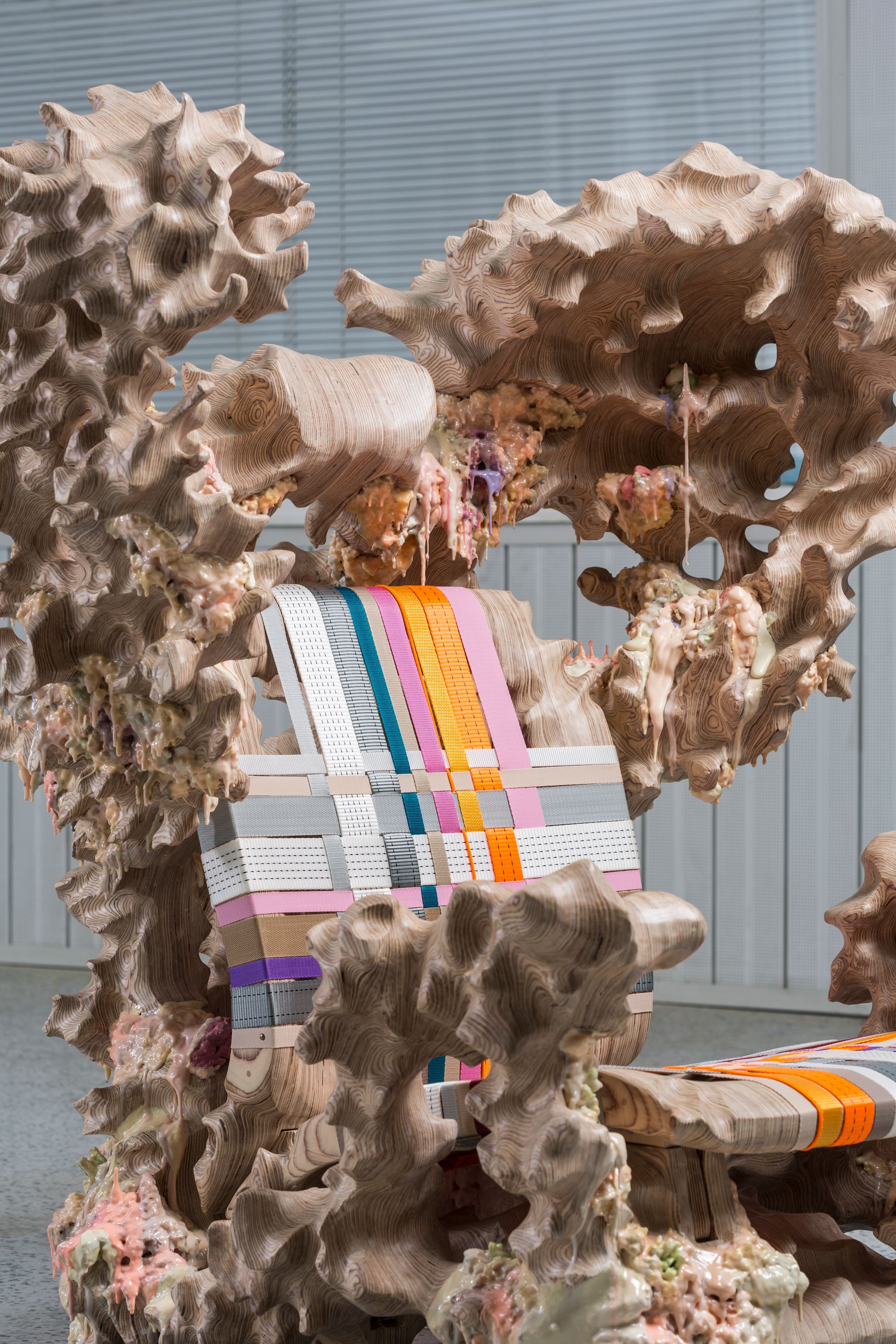
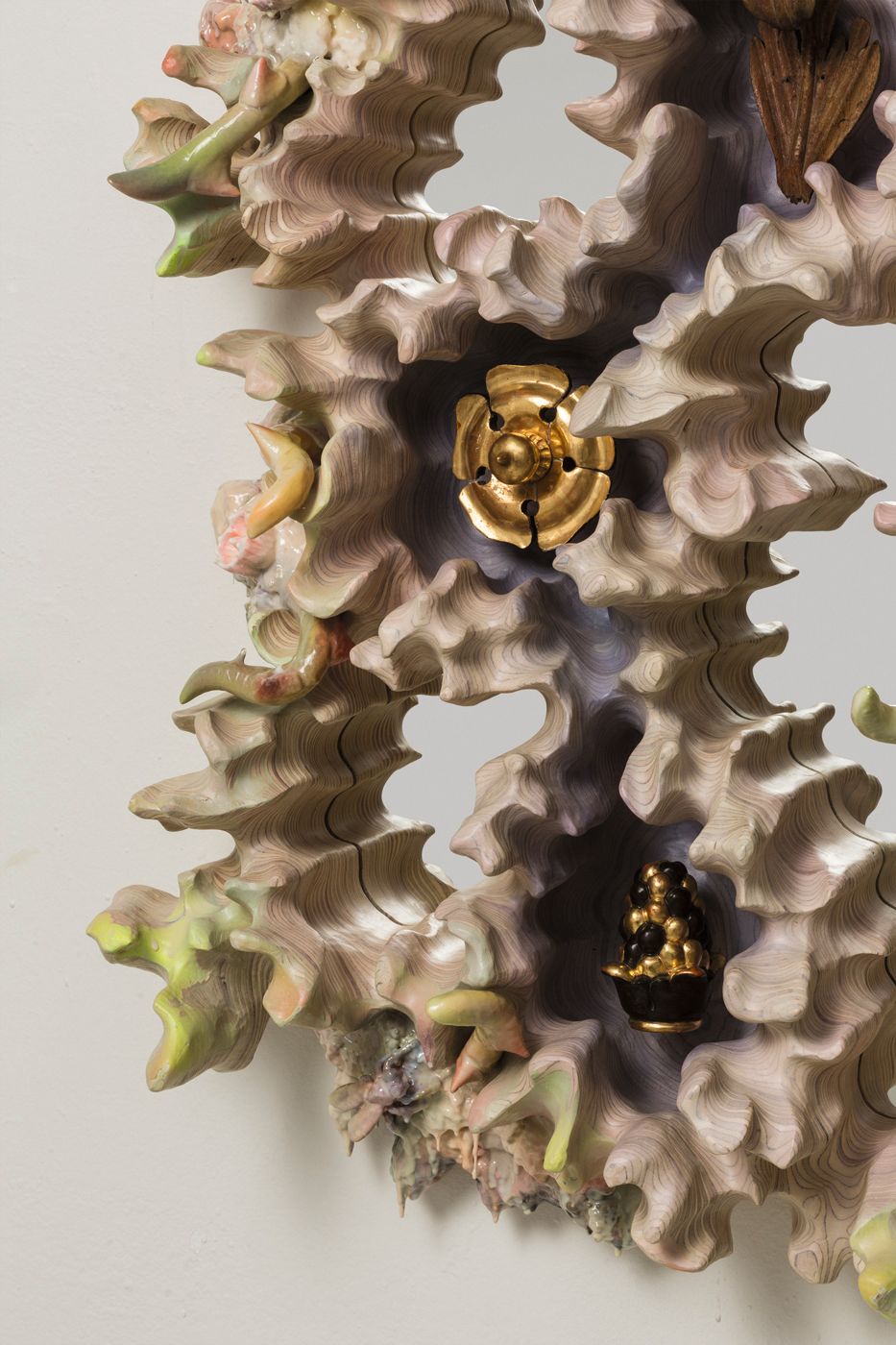
You mentioned many times that authenticity is vital for you. As an artist, what aspects are important to keep in mind in order to achieve that?
According to my idea, it’s about my direct participation and relationship with creation. A work is authentic if it deals with the emotional experience of the creator and strives to explore this experience during or after the process. My particular approach is being shaped step by step according to my own experiences. My other driving force is to be real. The element of “reality” is fundamental for me, and is strongly connected to “being authentic”. This should not be understood as part of visual realism, but rather as a deep experience and personal urgency.
Your collection called “The Metamorphosis” was first shown at the 17th edition of Design Miami. Since then, people could see your pieces at the Venice Biennale and at the Designblok of Prague. This clearly shows that you have an important international presence. What kind of plans do you have for the future?
Currently, I’m working on an exhibition for Prague. I needed a more intimate, personal project. This is going to be my first exhibition at my local scene. I’ll keep an eye on it for the whole summer and I cannot wait to come up with an entirely unique concept. Starting in September, I’m going to manage a studio as the department head of the Academy of Arts, Architecture and Design in Prague, so besides my own artistic endeavours, I’m going to dedicate my time to mentoring new talents and supporting the development of the creative scene of Prague and the contemporary design approach.
Tadeas Podracky | Web | Instagram
Photos: Magdalena Vojtekova
Continue reading H&H issue no.8!
ORDER HERE
World-leading defence technology in Hungary

"Thought and truth are infinite, they were before your material world." (x)










